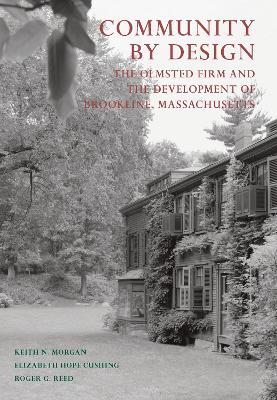In 1883, Frederick Law Olmsted Sr. moved from New York City to Brookline, Massachusetts, a Boston suburb that annointed itself the "richest town in the world." For the next half century, until his son Frederick Law Olmsted Jr. relocated to California in 1936, the Olmsted firm received over 150 local commissions, serving as the dominant force in the planned development of this community.
From Fairsted, the Olmsteds' Brookline home and office, the firm collaborated with an impressive galaxy of suburban neighbours who were among the regional and national leaders in the fields of architecture and horticulture, among them Henry Hobson Richardson and Charles Sprague Sargent. Through plans for boulevards and parkways, residential subdivisions, institutional commissions, and private gardens, the Olmsted firm carefully guided the development of the town, as they designed cities and suburbs across America. While Olmsted Sr. used landscape architecture as his vehicle for development, his son and namesake saw Brookline as grounds for experiment in the new profession of city and regional planning, a field that he was helping to define and lead.
Little has been published on the importance of Brookline as a laboratory and model for the Olmsted firm's work. This beautifully illustrated book provides important new perspective on the history of planning in the United States and illuminates an aspect of the Olmsted office that has not been well understood.
- ISBN13 9781558499768
- Publish Date 5 February 2013 (first published 1 January 2013)
- Publish Status Out of Print
- Out of Print 25 January 2021
- Publish Country US
- Imprint University of Massachusetts Press
- Format Hardcover
- Pages 384
- Language English
